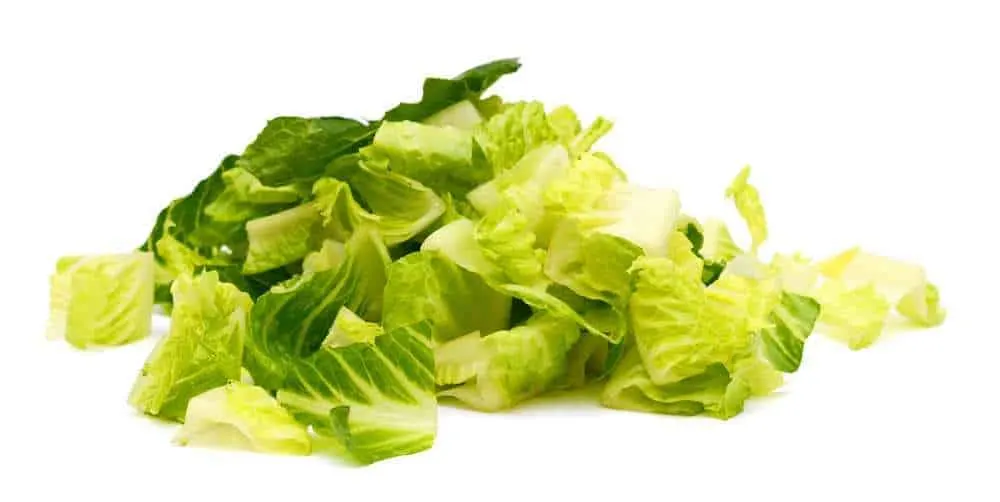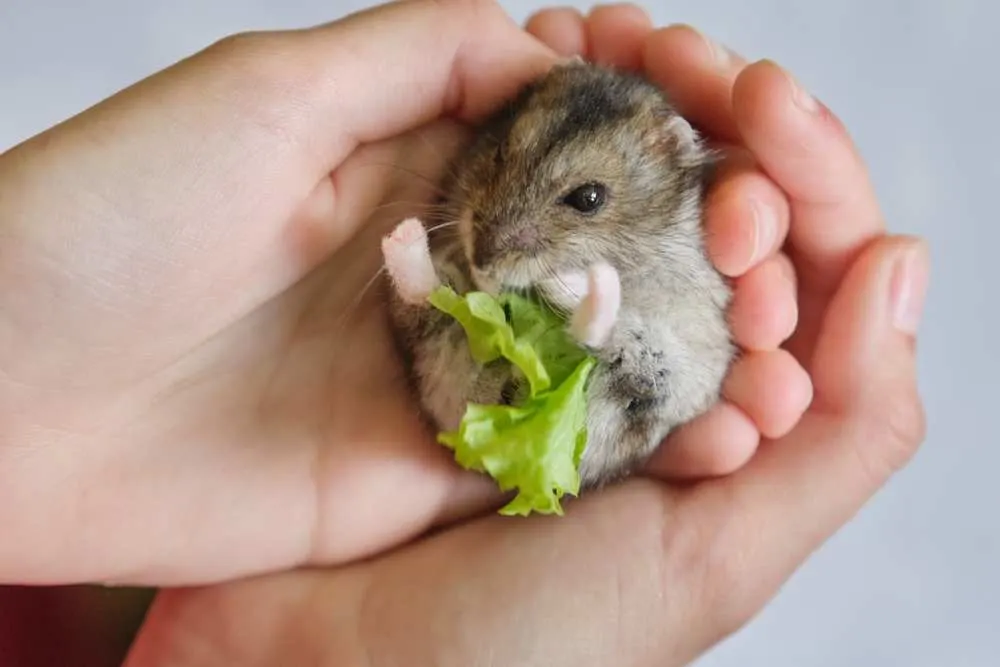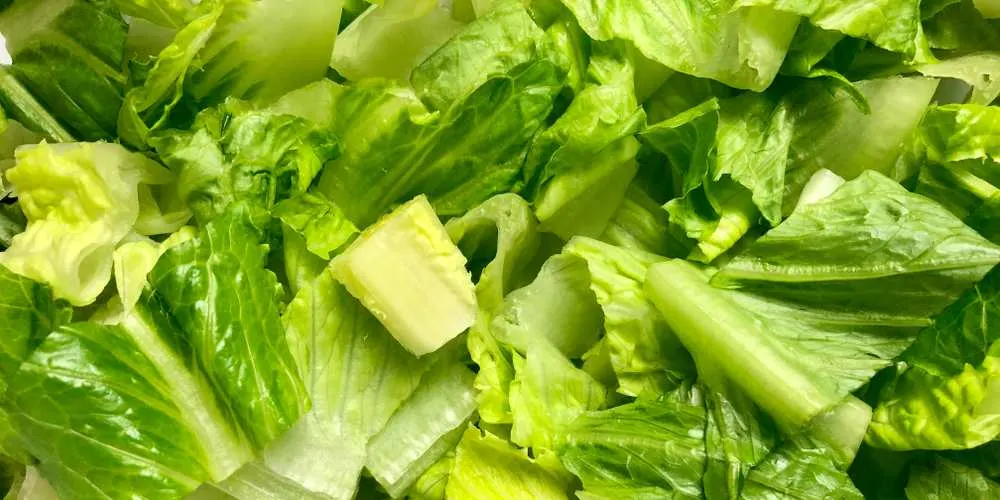I know for a fact your thought to yourself “can hamsters eat romaine lettuce?”. Well, you’re not the only one who asked this question.
The answer is plain and simple – Yes. Romaine lettuce is a nice way to treat your hamster from time to time while being careful not to make it into a regular ingredient in your hamster’s daily diet.
Despite being low in calories, this food also lacks some of the most important ingredients that are crucial to your hamster’s diet.
In order to find out the good, the bad, and the “ugly” when talking about romaine lettuce, I strongly suggest you keep reading and find out!

Romaine Lettuce – Is It Suitable For The Hamster’s Diet?
In principle, yes. There’s nothing wrong with feeding your hamster some romaine lettuce from time to time.
As you already probably know, there are only a few veggies that your hammy should be kept far from.
Some of them are raw potatoes or raw beans, but nothing too similar to romaine lettuce. This is quite an obvious indicator that romaine lettuce does not share any similarities with the veggies that are not recommended for your hamster.
This vegetable in particular is known for its low-calorie contents. This is an obvious advantage over other veggies that can be used as treats for your hamster.
It’s also high in water contents so you should keep an eye out for that. This can either hydrate your pet or pose a problem when talking about its bladder.
But you should keep in mind that besides low calories, romaine lettuce is also low in protein and fiber.
These two are key components of any good hamster diet. Keeping in mind that romaine lettuce is low in both of these makes it a little less of a fantastic choice. This isn’t a bad thing per se but should be considered when making a diet plan for your hammy.
Don’t be mistaken, some of this green delight in your hamster’s diet can’t do any harm, but it certainly doesn’t earn a place on the regular menu.

Nutritional Value of Romaine Lettuce
Some of the most important components of romaine lettuce are:
- Vitamin C
- Vitamin A
- Magnesium
- Potassium
- Calcium
All of these are useful to your hamster, without any question. These ingredients don’t pose a threat if romaine lettuce is served to your hamster in reasonable amounts.
Remember to thoroughly wash the lettuce before feeding it to your pet, as pesticide or insecticide can be found on the outer leaves of romaine lettuce.
Vitamin C
Vitamin C is probably the most known component of any diet. It helps the immune system and it’s also a great antioxidant. These two are key characteristics of this nutrient and are precisely the reason humans and other mammals take it.
Your hamster needs vitamin c in healthy amounts, so keep in mind when feeding your pet romaine lettuce whether you’ve already fed it with some vitamin C rich food.
If taken in larger amounts, vitamin C can sometimes cause diarrhea.
Vitamin A
This is without any question the best component of romaine lettuce. Not only does it help keep the immune system in check, but it also helps with growth and physical development.
It also helps with eyesight because it’s needed by the retina. This is something carrots are also known for.
You all know hamsters are small, but they need vitamin A to maintain a healthy immune system and grow to their full size.
When talking about side effects, there’s only one. The biggest one is carotenosis.
Magnesium
The primary function of magnesium is to regulate nerve and muscle function. This is important for your hamster as much as it’s important to humans.
Needless to say, it also prevents heart disease and high blood pressure, diabetes, and even osteoporosis. All of these are a real threat to your hammy and should be taken into consideration when making a diet plan for your pet.
Romaine lettuce is an excellent source of magnesium among other veggies and can provide enough of it to your hamster when mixed with hamster pellets in the regular diet.
Magnesium is not harmful and shouldn’t lead to any unwanted side effects.
Potassium
Potassium is very important when talking about your hamster’s heart. Diets that are low in potassium can lead to high blood pressure. Another thing to keep in mind is when your hamster doesn’t get enough potassium in its system, hypokalemia can occur.
Calcium
This ingredient is crucial to any good diet. It affects muscular health, bone-building and improves the digestive system.
Hamsters may seem small and fragile, but their bones and muscles are built extraordinarily well. To keep this as nature intended, your pet needs a healthy amount of calcium in its diet.
Treating your hammy with some romaine lettuce from time to time gives it a good calcium intake and prevents any bone or muscle damage that may occur otherwise.
Calcium (similar to potassium) doesn’t have any unwanted side effects.

How To Implement Romaine Lettuce In My Hamster’s Diet?
Knowing how much hamsters enjoy nibbling on leafy greens this won’t take much effort. Your pet will most certainly jump on any possible chance to nibble on some romaine lettuce. This will make your job much easier, as it doesn’t involve tricking your hammy to take some.
There are some ways you can make this much more fun and interactive for both you and your pet.
For example, you can hang a piece of lettuce somewhere in your hamster’s cage. This will allow it to work for its food, and not get lazy during feeding time.
Depending on the size of your hamster’s cage, you can tear a piece of romaine lettuce into smaller pieces and hang them or hide them in different spots in your pet’s cage.
This brings a whole new level to treating your pets right. I guarantee you your hamster will go crazy every time it realizes it’s romaine lettuce on the menu.
Another thing I like to do is make a mix of veggies that I then roll inside a romaine lettuce leaf. This resembles a small vegetable burrito that my hamster enjoys more than anything.
I like to use broccoli spears, dandelion greens, and carrot tops. You’re free to make your own mix of veggies, just keep in mind the amount you’re feeding to your pet. Don’t overfill the veggie burrito, because they will most certainly eat the whole thing!

When Not To Feed Your Hamster Romaine Lettuce?
There are generally no instances when feeding romaine lettuce to your hamster is a bad idea.
You just have to keep in mind that it’s full of water and that it can cause some bladder problems if fed on a daily basis. This is easily avoidable by keeping a track of when you last fed romaine lettuce to your pet.
Another instance where your hamster maybe doesn’t need romaine lettuce is when it already got all of the nutrients that this lettuce contains from other sources like other veggies or pellets.
In some cases, your hamster’s tummy might not like lettuce. If you notice an unusual stool after feeding your hamster romaine lettuce, or if you see any changes in its behavior, you should reconsider some other alternatives to romaine lettuce.

Conclusion
When asking can hamsters eat romaine lettuce, I think it’s pretty clear that romaine lettuce is not only harmless for hamsters but is desired from time to time.
All of the nutritional values found in this vegetable are useful in your pet’s occasional diet. The low risk of any unwanted side effects makes this a stress-free option when you decide to treat your hamster with something other than pellets.
Recognizing all benefits (starting with low calories, vitamins, and calcium) is key to your realization that romaine lettuce is a great addition to your hammy’s diet.
I suggest trying some of the ways I feed my hamster romaine lettuce and seeing for yourself how much your pet really enjoys this food!

